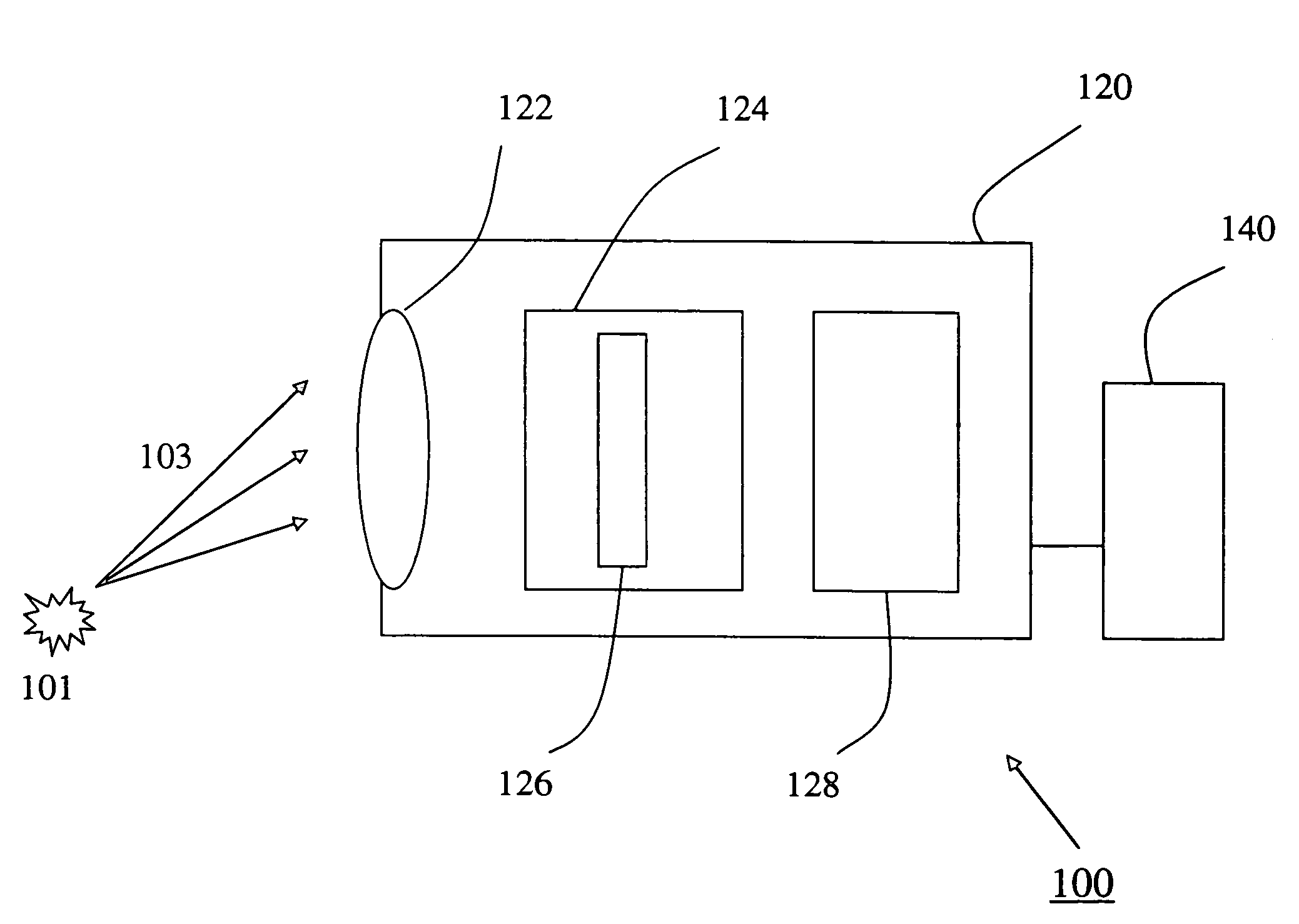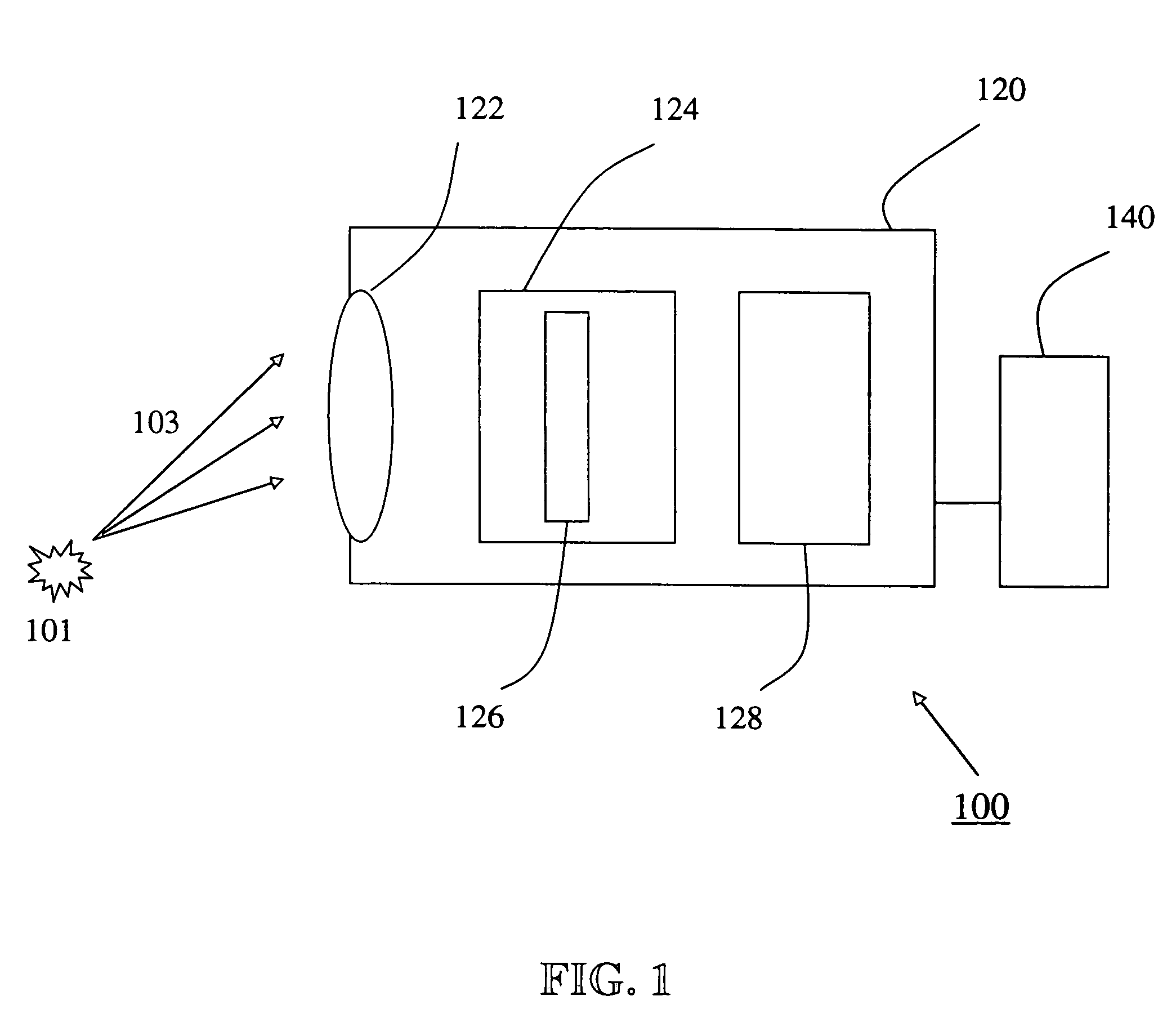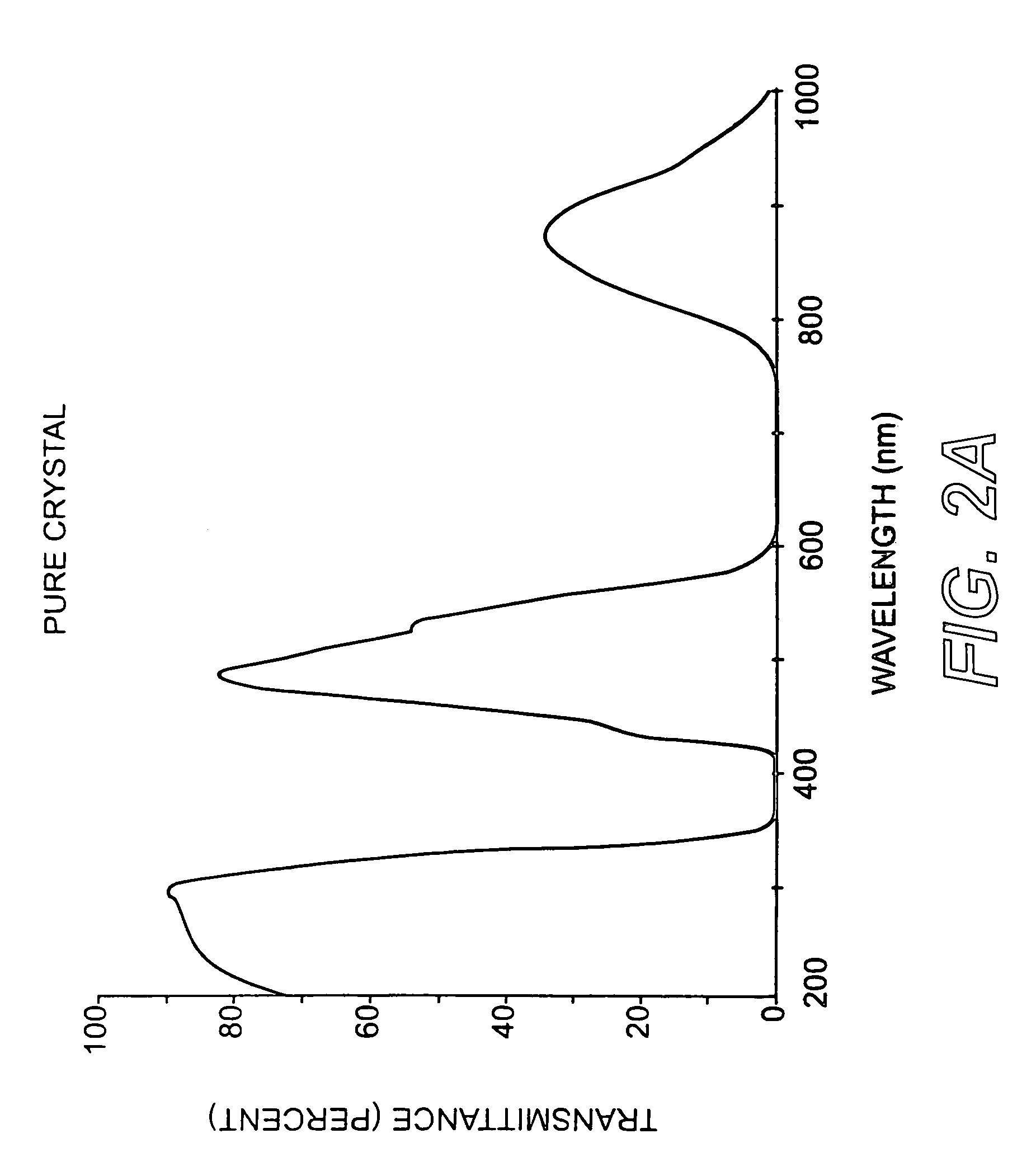Nuclear radiation detection system
a detection system and nuclear technology, applied in the field of detection systems, can solve problems such as reducing the sensitivity of detectors
- Summary
- Abstract
- Description
- Claims
- Application Information
AI Technical Summary
Benefits of technology
Problems solved by technology
Method used
Image
Examples
example 1
Preparation of NixCo(1-x)SiF6.6H2O, Crystals
[0039]NixCo(1-x)SiF6.6H2O crystals are grown in a saturated solution of NiSiF6 and CoSiF6. The ratio between the NiSiF6 and CoSiF6 affects the absorption characteristics of the NixCo(1-x)SiF6.6H2O crystals grown out of the solution. In one embodiment, the NiSiF6:CoSiF6 ratio in the solution is between 2:1 and 6:1, preferably between 3:1 and 5:1, and more preferably between 3:1 and 4:1.
[0040]NiSiF6 and CoSiF6 are synthesized by reactions between their corresponding carbonate salts and hydrofluorosilicic acid. The reactions can be given as follows:
NiCO3+H2SiF6=NiSiF6+H2O+CO2 (1)
CoCO3+H2SiF6=CoSiF6+H2O+CO2 (2)
[0041]The reaction mixtures are heated to 80° C. to accelerate the reactions. The reactions are preferably carried out in plastic containers because hydrofluorosilicic acid is erosive to glass containers. After their synthesis, NiSiF6.6H2O and CoSiF6.6H2O are purified by recrystallizing from water. FIG. 3 is a picture of recrystallized...
example 2
Preparation of K2NixCo(1-x)(SO4)2.6H2O Crystals
[0044]K2NixCo(1-x)(SO4)2.6H2O crystals were grown in a saturated solution of K2Ni(SO4)2 and K2CO(SO4)2. Commercially available K2Ni(SO4)2 and K2CO(SO4)2 were further purified by recrystallization. The recrystallization was carried out in a temperature controlled thermostat from a water based solution. The pH of the water based solution was kept around 2 by adding H2SO4 to the solution. The recrystallization temperature started at 40° C. and was gradually decreased to about 25° C. during crystallization with constant stirring.
[0045]The crystallization of K2NixCo(1-x)(SO4)2.6H2O was carried out under conditions suitable for growing NiSiF6.6H2O crystals. The conditions are described in detail in the U.S. Pat. No. 5,837,054, which is hereby incorporated by reference. In one embodiment, a saturated K2Ni(SO4)2 / K2CO(SO4)2 solution was prepared at an elevated temperature of 35° C. to 45° C., preferably at about 40° C. The temperature of the sol...
example 3
Preparation of NixCo(1-x)(BF4)2.6H2O Crystals
[0047]NixCo(1-x)(BF4)2.6H2O crystals were grown in a saturated solution of Ni(BF4)2 and Co(BF4)2. Commercially available Ni(BF4)2 and Co(BF4)2 were further purified by recrystallization. The recrystallization was carried out in a temperature controlled thermostat from a water based solution. The pH of the water based solution was kept around 2 by adding HF to the solution. The recrystallization temperature started at 40° C. and was gradually decreased to about 25° C. during crystallization with constant stirring.
[0048]The crystallization of NixCo(1-x)(BF4)2.6H2O was carried out under conditions suitable for growing NiSiF6.6H2O crystals. The conditions are described in detail in the U.S. Pat. No. 5,837,054, which is hereby incorporated by reference. In one embodiment, a saturated K2Ni(SO4)2 / K2Co(SO4)2 solution was prepared at an elevated temperature of 35° C. to 45° C., preferably at about 40° C. A small pre-grown seed crystal was added to...
PUM
 Login to View More
Login to View More Abstract
Description
Claims
Application Information
 Login to View More
Login to View More - R&D
- Intellectual Property
- Life Sciences
- Materials
- Tech Scout
- Unparalleled Data Quality
- Higher Quality Content
- 60% Fewer Hallucinations
Browse by: Latest US Patents, China's latest patents, Technical Efficacy Thesaurus, Application Domain, Technology Topic, Popular Technical Reports.
© 2025 PatSnap. All rights reserved.Legal|Privacy policy|Modern Slavery Act Transparency Statement|Sitemap|About US| Contact US: help@patsnap.com



